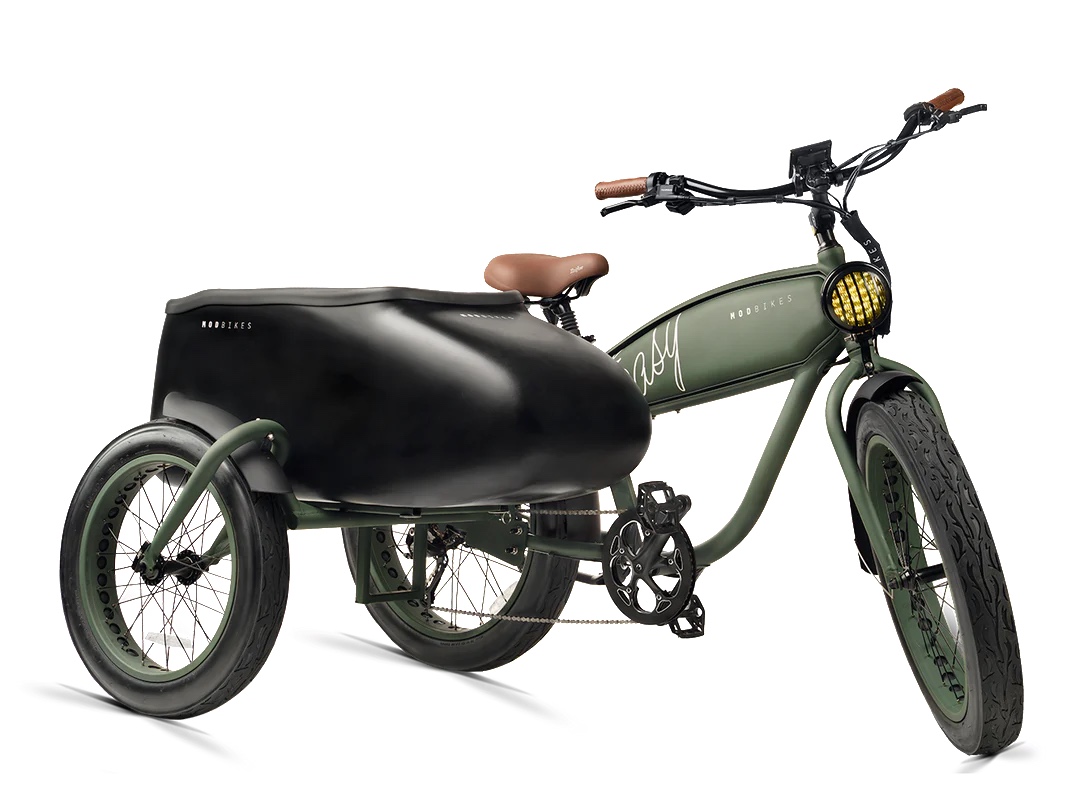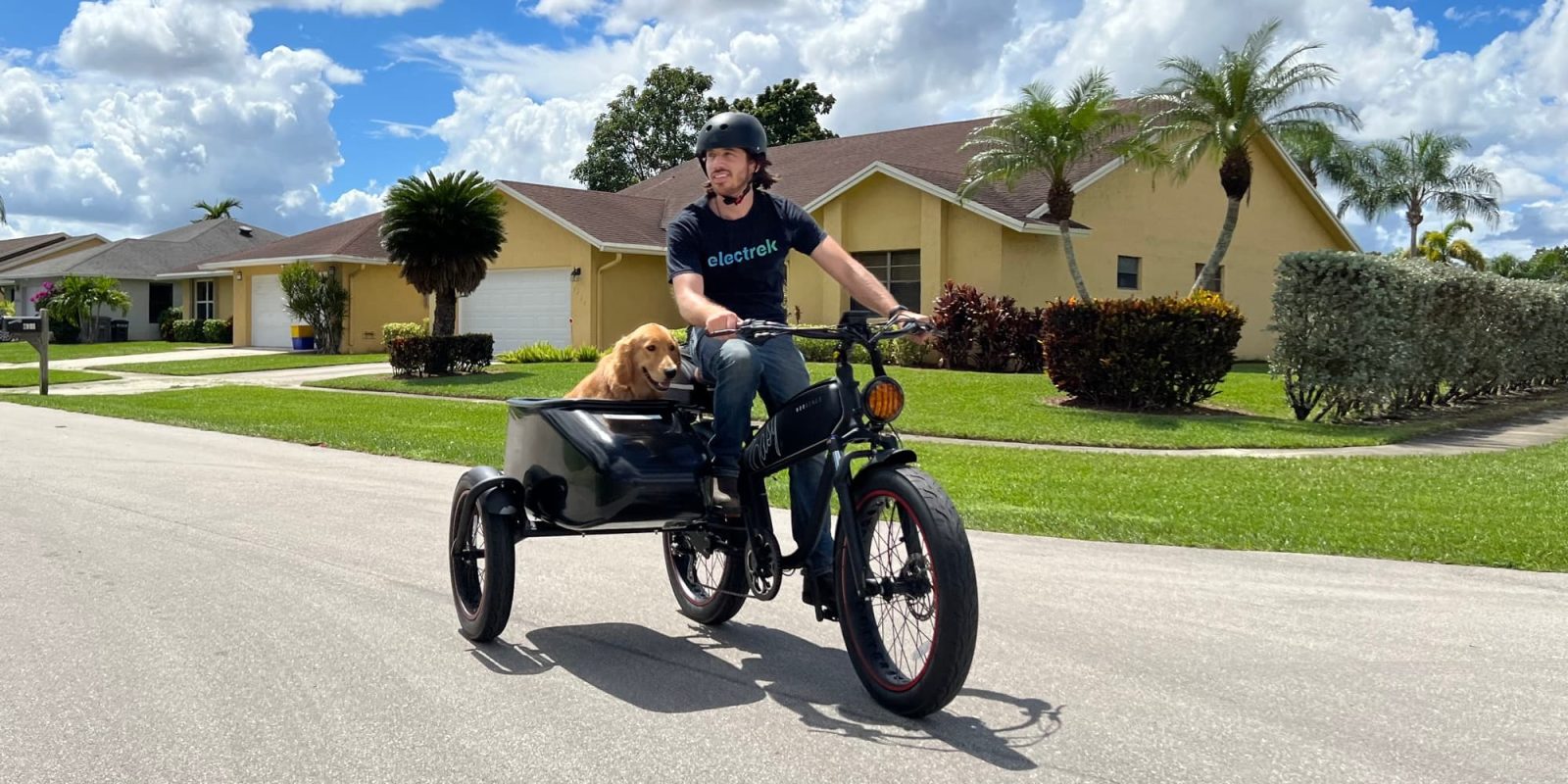Introducing the electric bike with sidecar, an innovative and versatile vehicle that combines the convenience of an electric bike with the added stability and storage space of a sidecar. Dive into the world of electric bikes with sidecars and discover a new way to commute, explore, and transport.
From its humble beginnings to its modern-day advancements, the electric bike with sidecar has evolved into a practical and eco-friendly solution for various transportation needs.
Electric Bike with Sidecar Overview
An electric bike with a sidecar is a unique and practical vehicle that combines the benefits of an electric bike with the added stability and storage space of a sidecar.
The concept of an electric bike with a sidecar has been around for several decades, but it has only recently become more popular as electric bikes have become more affordable and accessible.
Evolution of Electric Bikes with Sidecars
The first electric bikes with sidecars were built in the early 1900s, but they were not very practical due to the limited range and speed of electric bikes at the time.
In the 1960s and 1970s, there was a resurgence of interest in electric bikes with sidecars, as electric bike technology improved. However, it was not until the 21st century that electric bikes with sidecars became truly practical, thanks to the development of more powerful and efficient electric motors and batteries.
Today, electric bikes with sidecars are available in a variety of styles and configurations, making them suitable for a wide range of applications, from commuting to recreation.
Sidecar Design and Functionality

Sidecars for electric bikes come in a variety of designs, each with its own unique advantages and disadvantages. The most common type of sidecar is the enclosed sidecar, which provides protection from the elements and can be equipped with windows and doors.
Open sidecars, on the other hand, offer a more open-air experience and are often lighter and more compact. There are also specialized sidecars designed for specific purposes, such as cargo hauling or transporting passengers with disabilities.
Design Considerations
When designing a sidecar for an electric bike, there are several important factors to consider. Weight is a major concern, as a heavy sidecar can significantly reduce the range and performance of the bike. Size is also important, as a large sidecar can make the bike difficult to maneuver.
The attachment mechanism is also critical, as it must be strong enough to support the weight of the sidecar and its contents while also allowing the bike to turn and lean.
Impact on Stability and Handling
The addition of a sidecar can have a significant impact on the stability and handling of an electric bike. A sidecar can make the bike more difficult to turn, especially at low speeds. It can also make the bike more likely to tip over, especially if the sidecar is heavily loaded.
However, a well-designed sidecar can actually improve the stability of an electric bike by providing a wider wheelbase and a lower center of gravity.
Electric Motor and Battery Specifications

Electric bikes with sidecars offer a range of electric motor and battery specifications to meet diverse needs and preferences. Understanding these specifications is crucial for making an informed decision when choosing an electric bike with a sidecar.
Electric motors in electric bikes with sidecars are typically mid-drive or hub-mounted. Mid-drive motors provide a more balanced and natural riding experience, while hub-mounted motors are more affordable and require less maintenance.
Power and Torque
The power of an electric motor is measured in watts and determines the bike’s ability to accelerate and climb hills. Torque, measured in newton-meters, indicates the motor’s ability to overcome resistance and pull a load, making it an important consideration for sidecar applications.
Efficiency
The efficiency of an electric motor measures its ability to convert electrical energy into mechanical energy. A higher efficiency means less energy is wasted as heat, resulting in longer range and battery life.
Battery Technology
Electric bikes with sidecars typically use lithium-ion batteries, which offer high energy density, long cycle life, and relatively fast charging times. Battery capacity, measured in amp-hours (Ah), determines the range of the bike, while charging time varies depending on the battery size and charger specifications.
Safety and Regulations
Operating an electric bike with a sidecar introduces unique safety considerations and regulatory requirements. Understanding these aspects is crucial for responsible and legal riding.
Safety concerns include increased stability, visibility, and braking distance. Sidecars alter the bike’s center of gravity, requiring riders to adjust their riding style and cornering techniques. Increased visibility is essential to prevent collisions, and riders should consider additional lighting and reflective gear.
Regulations and Legal Requirements
Regulations for electric bikes with sidecars vary across jurisdictions. Some areas classify them as motorcycles, requiring a motorcycle license and registration. Other regions may have specific regulations for sidecar-equipped electric bikes. It’s imperative to research local laws and obtain the necessary licenses and registrations.
Safe Riding and Maintenance Practices
- Wear a helmet and appropriate protective gear.
- Adjust riding style to account for the sidecar’s impact on stability.
- Be aware of increased visibility needs and use additional lighting and reflectors.
- Regularly inspect and maintain the sidecar attachment points and suspension system.
- Consider adding a rear-view mirror to improve visibility.
Accessories and Customization
Electric bikes with sidecars offer a wide range of accessories and customization options to enhance their functionality and aesthetics. These accessories cater to the diverse needs of riders, allowing them to tailor their vehicles to suit their specific preferences and requirements.
Storage Solutions
- Sidecar Storage Bags:These bags provide ample storage space for groceries, luggage, and other items. They come in various sizes and designs to accommodate different cargo needs.
- Rear Cargo Racks:For additional storage capacity, riders can install rear cargo racks on the back of the sidecar. These racks can carry bulky items like bicycles or camping gear.
Weather Protection
- Windshields:Windshields protect riders from wind, rain, and debris while riding. They come in different heights and styles to suit personal preferences.
- Rain Covers:For complete weather protection, rain covers can be installed over the sidecar. These covers keep riders and cargo dry in inclement weather.
Lighting Systems
- Headlights and Taillights:Additional headlights and taillights can enhance visibility and safety during nighttime riding.
- Turn Signals:Turn signals indicate the rider’s intended direction, making it safer to navigate traffic.
Customization Options
Beyond accessories, electric bikes with sidecars can be customized to reflect the rider’s personality and style. Creative options include:
- Custom Paint Jobs:Riders can choose custom paint colors and designs to create a unique look for their sidecar.
- Upholstery:The sidecar’s interior can be upholstered in different materials and colors to match the rider’s taste.
- Graphics and Decals:Riders can add graphics and decals to personalize their sidecar, showcasing their hobbies or interests.
The possibilities for accessories and customization are endless, allowing riders to create electric bikes with sidecars that are both functional and expressive. These vehicles offer a unique blend of practicality and style, making them an ideal choice for those seeking a versatile and personalized mode of transportation.
Use Cases and Applications
Electric bikes with sidecars offer a versatile solution for various use cases and applications, providing numerous benefits to different user groups.
Commuting
With their ability to carry passengers or cargo, electric bikes with sidecars provide a convenient and eco-friendly commuting option. They allow commuters to navigate traffic efficiently, reducing travel time and saving on fuel costs.
Delivery Services
The sidecar’s additional storage space makes electric bikes ideal for delivery services. Businesses can utilize these vehicles to deliver goods locally, offering a cost-effective and emission-free alternative to traditional delivery methods.
Families
Families with young children can greatly benefit from electric bikes with sidecars. The sidecar provides a safe and comfortable space for children, enabling parents to enjoy family outings without the hassle of separate strollers or carriers.
Examples
In Copenhagen, electric bikes with sidecars have become increasingly popular among families, providing a convenient and eco-friendly way to explore the city.Delivery companies in Berlin have adopted electric bikes with sidecars to make sustainable deliveries, reducing their carbon footprint and improving traffic flow.
Market Trends and Future Developments
The market for electric bikes with sidecars is rapidly expanding, driven by increasing demand for sustainable and convenient transportation options. Emerging technologies and innovations are shaping the future of these vehicles, leading to enhanced performance, safety, and functionality.
In recent years, electric motors have become more powerful and efficient, enabling sidecar bikes to tackle challenging terrains and carry heavier loads. Battery technology has also improved, extending the range of these vehicles and reducing charging times. Additionally, advancements in suspension systems and braking technologies have enhanced the overall riding experience and safety.
Adoption and Growth Potential, Electric bike with sidecar
The adoption of electric bikes with sidecars is expected to grow significantly in the coming years. These vehicles offer a practical and eco-friendly alternative to traditional motorcycles and cars, particularly for urban commuters and families looking for a convenient way to transport passengers or cargo.
Governments and municipalities are also playing a role in promoting the adoption of electric bikes with sidecars. Many countries offer incentives and subsidies to encourage the purchase of these vehicles, while cities are investing in infrastructure such as dedicated bike lanes and charging stations.
Last Word

As the future of transportation unfolds, the electric bike with sidecar stands poised to play an increasingly significant role. With its unique combination of convenience, versatility, and environmental friendliness, this remarkable vehicle is set to transform the way we move.
Detailed FAQs: Electric Bike With Sidecar
What are the benefits of an electric bike with sidecar?
Electric bikes with sidecars offer numerous advantages, including increased stability, additional storage capacity, weather protection, and enhanced passenger comfort.
How does a sidecar impact the handling of an electric bike?
Sidecars can affect the handling of an electric bike, making it more stable at lower speeds and when carrying heavy loads. However, riders may need to adjust their riding style to account for the increased weight and dimensions.
What types of sidecars are available for electric bikes?
Sidecars for electric bikes come in a variety of designs, including enclosed cabins, open-air platforms, and cargo boxes. The choice of sidecar depends on the intended use and personal preferences.